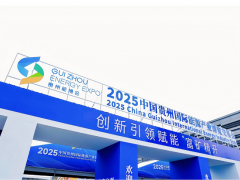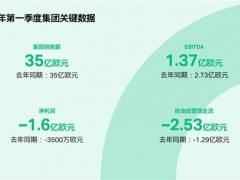據(jù)油價(jià)網(wǎng)2021年7月25日報(bào)道,在競爭的后期,俄羅斯最近宣布了針對電動(dòng)汽車(EV)增加投資,試圖趕上歐洲其他國家的能源轉(zhuǎn)型。俄羅斯預(yù)計(jì)將從莫斯科開始建設(shè)電動(dòng)汽車基礎(chǔ)設(shè)施。 俄羅斯首都計(jì)劃每年安裝200個(gè)電動(dòng)汽車充電站,從2021年開始到2023年前將建造600個(gè)電動(dòng)汽車充電站。
莫斯科交通部門負(fù)責(zé)人馬克西姆·利克蘇托夫表示:“現(xiàn)在莫斯科大約有2000輛電動(dòng)汽車,而且電動(dòng)汽車的數(shù)量每年都在以10-15%的速度增加。”“要想實(shí)現(xiàn)電動(dòng)汽車數(shù)量更大的增加,必須安裝更多的充電基礎(chǔ)設(shè)施。”
在未來十年里,莫斯科的公共交通也將轉(zhuǎn)向電力。 Mosgortrans是莫斯科市公共汽車和有軌電車網(wǎng)絡(luò)的所有者,該公司計(jì)劃在今年年底前將其電動(dòng)巴士數(shù)量從600輛增加到1000輛,目標(biāo)是到2024年前實(shí)現(xiàn)2000輛電動(dòng)巴士取代現(xiàn)有的汽油和柴油巴士。
然而,在電動(dòng)汽車方面,俄羅斯遠(yuǎn)遠(yuǎn)落后于歐洲其他國家,全國僅注冊了1.1萬輛電動(dòng)汽車,而2019年歐盟的這一數(shù)字為100萬輛。 但這一數(shù)字預(yù)計(jì)在未來幾年還會(huì)增加,預(yù)計(jì)2021年俄羅斯的電動(dòng)汽車銷量將達(dá)到1000輛,預(yù)計(jì)未來幾年這一數(shù)字將每年翻番。
就在幾周前,有報(bào)道稱俄羅斯推出了一項(xiàng)新的國家計(jì)劃,將投資110億美元發(fā)展電動(dòng)汽車交通。 這大約是此前為該項(xiàng)目指定資金的兩倍。
這個(gè)計(jì)劃的大部分資金將來自對傳統(tǒng)燃料汽車的銷售征稅,以及對進(jìn)口外國電動(dòng)汽車征收兩項(xiàng)新關(guān)稅。
根據(jù)這項(xiàng)計(jì)劃,俄羅斯預(yù)計(jì)在2022年生產(chǎn)3000輛電動(dòng)汽車,到2030年將增加到每年21.7萬輛。 目前,俄羅斯不生產(chǎn)任何電動(dòng)汽車,這意味著在該國強(qiáng)大的汽車行業(yè)中,電動(dòng)汽車將有很大的發(fā)展?jié)摿Α?/p>
俄羅斯的汽車工業(yè)在該國經(jīng)濟(jì)和就業(yè)中占了很大一部分,有超過60萬,或1%的勞動(dòng)力在汽車工業(yè)就業(yè)。 俄羅斯仍然是歐洲第五大汽車市場,年產(chǎn)量為310萬輛。 這使得俄羅斯在未來幾年向電動(dòng)汽車制造業(yè)轉(zhuǎn)型時(shí)處于有利地位。
盡管俄羅斯起步較晚,但與其他歐洲生產(chǎn)國相比,俄羅斯可以為消費(fèi)者提供更便宜的電動(dòng)汽車,從而擁有競爭優(yōu)勢。 預(yù)期中的零排放Terra Transport Asset(簡稱Zetta)的成本預(yù)計(jì)僅為6100美元,比許多替代品都便宜,也低于德國的電動(dòng)汽車補(bǔ)貼計(jì)劃,從理論上講,消費(fèi)者可以免費(fèi)獲得一輛汽車。
普京總統(tǒng)的氣候顧問Ruslan Edelgeriev表示:“全球和俄羅斯的主要汽車制造商都在宣布新的電動(dòng)汽車生產(chǎn)線。 很多公司計(jì)劃到2030年前停止生產(chǎn)內(nèi)燃機(jī)汽車。”此外,“在未來20-30年,所有人都將轉(zhuǎn)向電動(dòng)汽車。”
俄羅斯工程公司L-Charge宣布,將通過應(yīng)用程序?yàn)殡妱?dòng)汽車提供按需移動(dòng)充電服務(wù),允許電動(dòng)汽車車主在莫斯科各地申請充電,私營企業(yè)也加入了這股電動(dòng)汽車熱潮。 如果成功,L-Charge計(jì)劃把電動(dòng)汽車充電業(yè)務(wù)擴(kuò)展到巴黎、柏林、紐約、阿姆斯特丹和倫敦。 如果俄羅斯在電動(dòng)汽車制造和推廣計(jì)劃上取得成功,這可能是眾多私人企業(yè)的第一個(gè)創(chuàng)舉。
雖然俄羅斯在電動(dòng)汽車領(lǐng)域的創(chuàng)新并不出名,但大量的投資、進(jìn)行能源轉(zhuǎn)型的意愿、俄羅斯的汽車制造技術(shù)和低成本可能會(huì)讓俄羅斯在追趕歐洲其他國家時(shí)擁有競爭優(yōu)勢。
李峻 編譯自 油價(jià)網(wǎng)
原文如下:
Russia Is Finally Embracing The Electric Vehicle Boom
Late in the race, Russia has recently announced investments targeting electric vehicle (EV) growth in an attempt to catch up with the transition across the rest of Europe. Russia is expected to start work on its EV infrastructure creation, starting in Moscow. The city plans to install 200 EV charging stations annually, until 600 are established by 2023, beginning in 2021.
The head of the city's transport department, Maxim Liksutov, stated "There are around 2,000 (electric) cars in Moscow now and their number increases every year by about 10-15%. Charging infrastructure has to appear for it to grow more."
Within the next decade, the city will also see its public transport shift to electric. Mosgortrans, the cities bus and tram network owner, intends to increase its electric bus fleet from 600 to 1000 by the end of the year, aiming for 2,000 electric buses to replace the existing petrol and diesel-fuelled fleet by 2024.
However, Russia is way behind the rest of Europe when it comes to EV, with just 11,000 electric cars registered across the country, compared to 1 million across the EU in 2019. But this figure is expected to increase in the coming years, with an anticipated 1,000 EV to be sold in Russia in 2021, expecting this figure to double annually in subsequent years.
This comes just weeks after reports that Russia has introduced a new state program, which will see an investment of $11 billion in the development of EV transport. This is around double the previously designated funding for the program.
Much of the funding for the program will come from the introduction of a tax on the sale of traditionally-fuelled cars as well as two new tariffs on the import of foreign electric vehicles.
Under the program, Russia expects to produce 3,000 in 2022, growing to produce 217,000 EV annually by 2030. At present Russia does not manufacture any electric cars, meaning there is significant potential to develop this part of the country’s strong automotive sector.
Russia’s automotive industry makes up a significant part of the country’s economy and employment, with over 600,000, or 1 percent of the workforce, employed in the sector. Russia continues to be the fifth-largest auto market in Europe with a production rate of 3.1 million vehicles each year. This puts it in a strong position to transition to EV manufacturing in the coming years.
Although late to the table, Russia could have a competitive edge on other European producers with cheaper EVs available for consumers. The anticipated Zero Emission Terra Transport Asset, or Zetta, is expected to cost just $6,100, making it cheaper than many alternatives and less than Germany’s EV subsidy scheme, theoretically giving consumers a free car.
Ruslan Edelgeriev, climate adviser to President Putin has stated, “Leading automakers, globally and in Russia, are announcing new electric vehicle lines. A lot of them plan to stop making internal combustion engine cars by 2030.” Further, “In the next 20-30 years everyone will transition to electric vehicles.”
Private companies are also buying into the EV craze as Russian engineering firm L-Charge has announced that it will be providing on-demand mobile charging for electric cars via an app, allowing EV owners to request a charge across Moscow. If successful, the company plans to expand to Paris, Berlin, New York, Amsterdam, and London. This could be the first of many private initiatives if Russia is successful in its EV manufacturing and uptake plans.
While Russia hasn’t been known for its innovation in EV, significant investment, the willingness to make the shift, and the country’s automotive manufacturing know-how and low costs could give it a competitive advantage as it catches up with the rest of Europe.
免責(zé)聲明:本網(wǎng)轉(zhuǎn)載自其它媒體的文章,目的在于弘揚(yáng)石化精神,傳遞更多石化信息,并不代表本網(wǎng)贊同其觀點(diǎn)和對其真實(shí)性負(fù)責(zé),在此我們謹(jǐn)向原作者和原媒體致以敬意。如果您認(rèn)為本站文章侵犯了您的版權(quán),請與我們聯(lián)系,我們將第一時(shí)間刪除。







